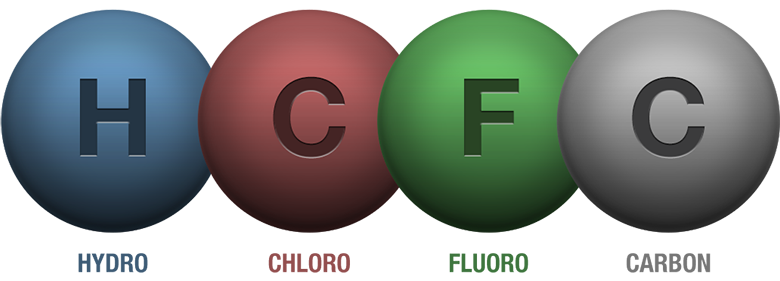
The Story Of The R22 Phaseout Has To Do With The Montreal Protocol And Hcfcs
What do you know about the R22 phaseout? How much do you know about HCFCs? And what’s the story behind the Montreal Protocol bringing all this together? You might have heard bits and pieces as you learned that topping off your AC system with HCFCs is either soon to be or already illegal. While it’s true that you might run your older air conditioner using this particular refrigerant for a while longer, you might even decide to go for replacement sooner than is legally mandated given the fact that this gas carries a significant environmental price with it. Keep reading into the following paragraphs to learns the gists behind all of this.
Here you can have a look at the reasons behind the ban, so you can perfectly comprehend the reasoning behind the protocols and laws being enforced in many nations. In doing this, you’ll know exactly why you face the choice of either running your older system on existing R22 or having it replaced safely and responsibly.
The Montreal Protocol is the name of an agreement between numerous member states of the United Nations. It was signed back in 1987 after there was thorough examination of evidence showing that HCFCs and other ozone-depleting substances had damaging effects. Are you old enough to remember concerns about the so-called ozone hole in the upper atmosphere that would let in more solar radiation than was healthy for the planet?

The Montreal Protocol is one of the reasons you don’t actually hear about it so much anymore. Whether you call it global warming or climate change, the planet still faces rising temperatures and increased pollution levels, but this particular battle is actually winnable in the larger picture. That’s due in large part to this agreement between member countries to phase out both the production and actual use of such chemicals. No member state or signer is actually legally bound to do this, but many have passed their own domestic legislation and/or environmental regulations to do just that. The choice of the United States to phase R22 and similar HCFCs legally out was a result of signing the Montreal Protocol.
Within the borders of the United States, many identified ozone-depleting substances are abbreviated as ODS. They are regulated as controlled substances, either as class I or class II. Substances designated as class I have been documented to have greater potential for ozone depletion than class II substances. As such, they’ve been totally phased out within the United States, meaning that with only a limited handful of exceptions, no one is able to import or produce them.

Class II substances wound up being the transitional substitutes for most of the class I substances that got banned, and all class II substances are HCFCs, which is the faster way of saying hydrochlorofluorocarbons. However, even HCFCs are going to follow in the footsteps of class I substances, facing a halt of import and production by the year 2020. This is where things get real for many homeowners and building managers, because quite a few pieces of refrigeration equipment and air conditioning units use a refrigerant known at R22 or HCFC22.
As you can guess, R22 is an HCFC, one of those pesky hydrochlorofluorocarbons that can eat up the ozone layer and help the sun bake the Earth more than is healthy for those living on it. This chemical compound consists of things like chlorine, fluorine, carbon, and hydrogen, like other HCFCs. The chemical structure of HCFCs means they have low toxicity to those around them, even if they hurt the ozone layer way up high, and they also have low levels of reactivity. This made them very useful in quite a few industrial and commercial applications.
The United States efforts to codify and implement the Montreal Protocol within her fifty states were spelled out in the Clean Air Act, specifically in EPA regulations that were issued under sections 601 through 607. That content covers the eventual drawdown and cessation of the import and production of ozone-depleting substances. The American phaseout has already, at the time of writing, seriously reduced the levels of ODS that were being produced inside the country or imported through various ports of call and border entry points.
This is all being done in accordance with the Montreal Protocol, the international treaty which was a global attempt at preserving and protecting the ozone of the stratosphere. The agreement stipulated that more than one international organization would report on the scientific facts and findings surrounding ozone depletion, paving the way for willing member states to implement specific domestic projects in their markets to move consumers away from ozone-depleting substances. It would also provide a global forum for multinational policy discussions. It also established what was called a Multilateral Fund. That would provide needed resources to any developing nations wanting to promote their own transitions towards more ozone-safe technologies.
The United Nations Environmental Programme, or UNEP, website has the full actual text of the Montreal Protocol. It should be noted that this document has been amended and altered at various points since 1987, specifically in terms of phaseout schedules. The Environmental Protection Agency of the United States actually accelerated its own phaseout, largely through the Clean Air Act that Congress amended back in 1990. The Clean Air Act is also known as the CAA to industry experts. In it, Title VI guides the EPA to the protection and preservation of the ozone layer through a number of programs, some of them voluntary, and some of them regulatory and required. Title IV covers the production, handling, import, and recycling of ozone-depleting substances, how substitutes are evaluated, and what efforts are being made to educate the public.
HCFCs don’t just obliterate the ozone layer. Direct exposure to people can mean suffering a tight chest or coughing, although these are usually temporary. Some HCFCs also react with ground-level chemicals to create surface ozone. HCFCs are also greenhouse gases. Fortunately, a number of R22 replacement options exist, including ways of possibly converting older systems to take substitutes. Getting an entirely new system is a common choice too. You can even keep running on your R22, but if you have a breakdown that leaks it, you may not be able to get more. Find out here more about Bluon Energy and the purpose of refrigerant.
